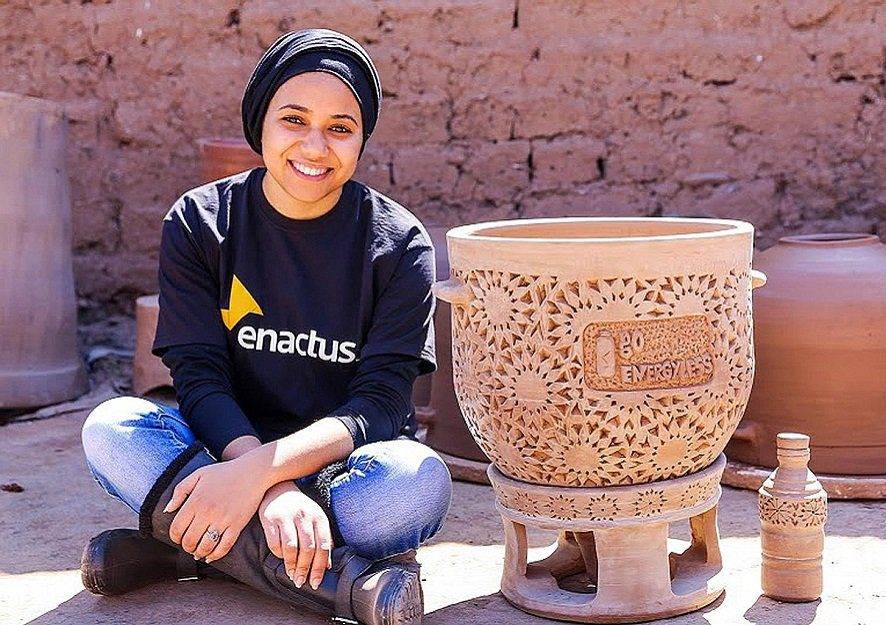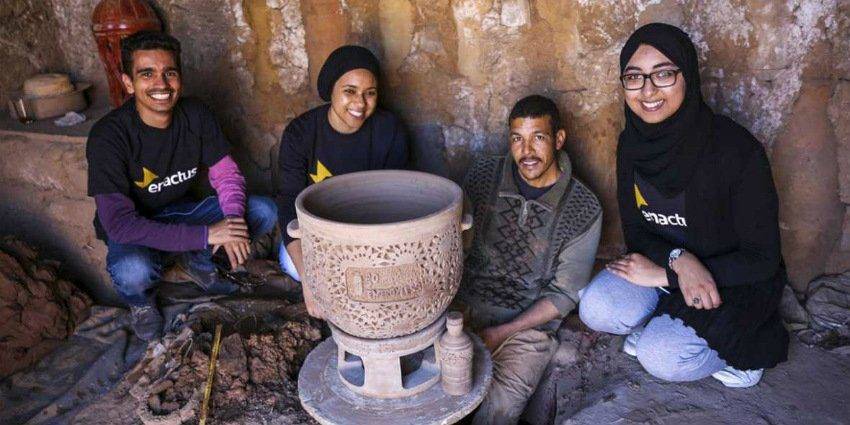Going Energyless – How A Final Year Project Trip Birthed A Fridge That Works Without Electricity

A group of final year college students of Environmental Engineering were on a project trip to a village in the Khenifra region of Morocco when the realisation of the struggles of the locals led them to refurbish an ancient invention.
Rawya Lamhar was visiting a remote, interior village in the Moroccan region of Khenifra as part of her final year project assignment being a senior student in the field of environmental engineering.
Her mission was to survey the area and gather mostly geographical/topographical information but while on some sort of reconnaissance, she was confronted by something she wasn’t exactly on the lookout for.
In remote Moroccan villages like the one in mountain regions of Khenifra, basic amenities like pipe-borne water, electricity, housing, and healthcare facilities are not exactly at their best.
This makes for a poor standard of living. The poor electricity supply is particularly debilitating in that it affects basically everyone and everything, with the healthcare facility being especially hit since medical supplies that require refrigeration cannot be preserved.
To her dismay, Rawya discovered that people suffering from illnesses such as diabetes had no way of conserving their temperature-sensitive medicines, and the lives put at risk because of that was of great concern to her.
And then there was the matter of people living in mountain villages being unable to preserve what little farm produce they could gather from their farms because of the poor electricity supply. And apart from that, it’s not as if the bulk of the people living in the locale had the means to purchase functional cooling systems – there’s the biting economic situation to contend with.
So, Rawya and her colleagues got their thinking caps on, trying to figure out a cost-effective way to fix the problem. Being merely college students, electrifying the entire village wasn’t something they could pull off and even if they could, furnishing every home with cooling systems was quite a reach.
Then, the idea hit them, and interestingly, it came in the form of a centuries-old innovation. Inspired by the age-long traditional practice that involves cooling water in pots made of clay, Rawya and her colleagues decided to take things up a notch by adding some finesse to the technique.
Together, they put together something they like to call “the clay fridge” – a product capable of conserving foods and drugs without electricity.

Source: Pinterest
According to Moroccan media, the ecological fridge can maintain a temperature of 6 degrees Celsius in dry areas and 12 degrees Celsius in humid conditions.
To work optimally, the clay fridge must be kept in an airy area, far from other objects, and away from the wall or ground. Hence, it is stands on another pedestal equally made of clay. If the conditions and handling are right, the storage tool gives the user the ability to preserve food products for around 10 to 15 days.
Since the invention was first rolled out in 2015, it’s become quite popular, especially amongst people living in remote areas that suffer irregular or poor power supply. Women in such communties are of the opinion that with the device, they are able to cut down on their farm produce storage expenses, and also have access to a much more diverse food supply.
For persons with diabetes, the clay fridge couldn’t have come at a better time, as their medicine, insulin, becomes ineffective when not stored in the right conditions. And the clay fridge helps to keep the hormone in good condition.

As soon as Rawya and her colleagues had perfected the design of the clay fridge, their next move was to set up an organisation called Go Energyless Solutions; an enterprise through which they’d promote their ancient cooling invention.
Since then, a production studio located near Marrakech has materialised and within the walls of this facility, clay fridges are produced and sold at prices of between USD 24.00 and USD 500.00.
Beyond Morocco, orders have come from as far away as the U.S., parts of Europe, and even Asia since they rolled out the product, and Rawya and the rest of the team are hoping to attract a bigger audience in the years to come.
Featured Image Courtesy: face2faceafrica.com